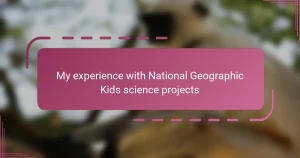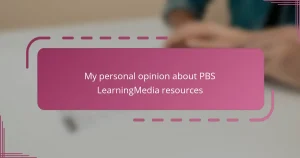Key takeaways
- Duolingo offers accessible language learning through bite-sized lessons, but combining it with real-life conversations enhances understanding and retention.
- Language skills boost children’s confidence, empathy, and cognitive abilities, while motivating them through rewards and real-world application keeps learning engaging.
- Incorporating play, storytelling, and interactions with native speakers enriches language learning beyond app usage, fostering a more meaningful experience.
- Patience and a balanced approach, including breaks when needed, are essential to prevent frustration and make language learning enjoyable for children.
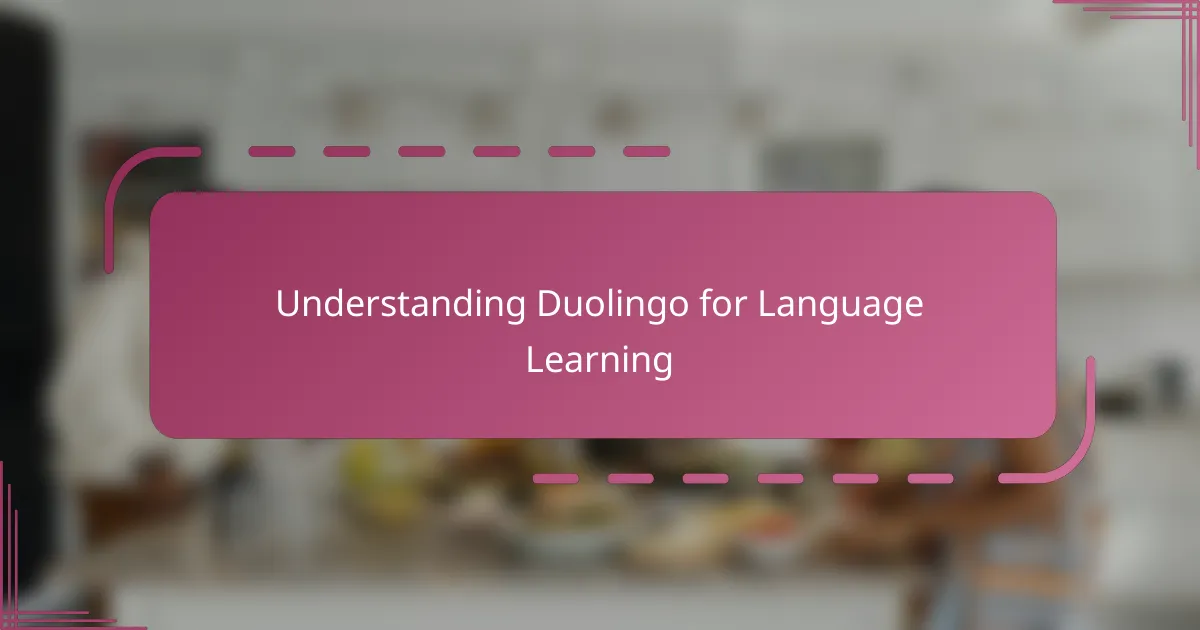
Understanding Duolingo for Language Learning
Duolingo is often seen as a fun and approachable way to start learning a new language, but how effective is it really in building solid language skills? From my experience, the app’s bite-sized lessons and game-like structure make it easy to stay motivated, especially when juggling parenting duties. Yet, I sometimes wonder if clicking through exercises can replace the deeper learning that comes from real conversations.
I’ve noticed that Duolingo excels at introducing vocabulary and basic grammar, which gives learners a sense of progress and confidence. However, the app’s focus on repetition sometimes feels like I’m memorizing rather than truly understanding the language. Have you ever caught yourself guessing answers just to keep your streak alive? I have, and it made me question the depth of what I was really learning.
Still, what I appreciate most about Duolingo is its accessibility—no matter where I am or how little time I have, I can squeeze in a quick lesson. This flexibility makes it a handy tool in a busy parent’s toolkit, though I’d caution against relying on it exclusively. Thinking about this balance makes me wonder: isn’t combining structured tools like Duolingo with real-life practice the best way forward?
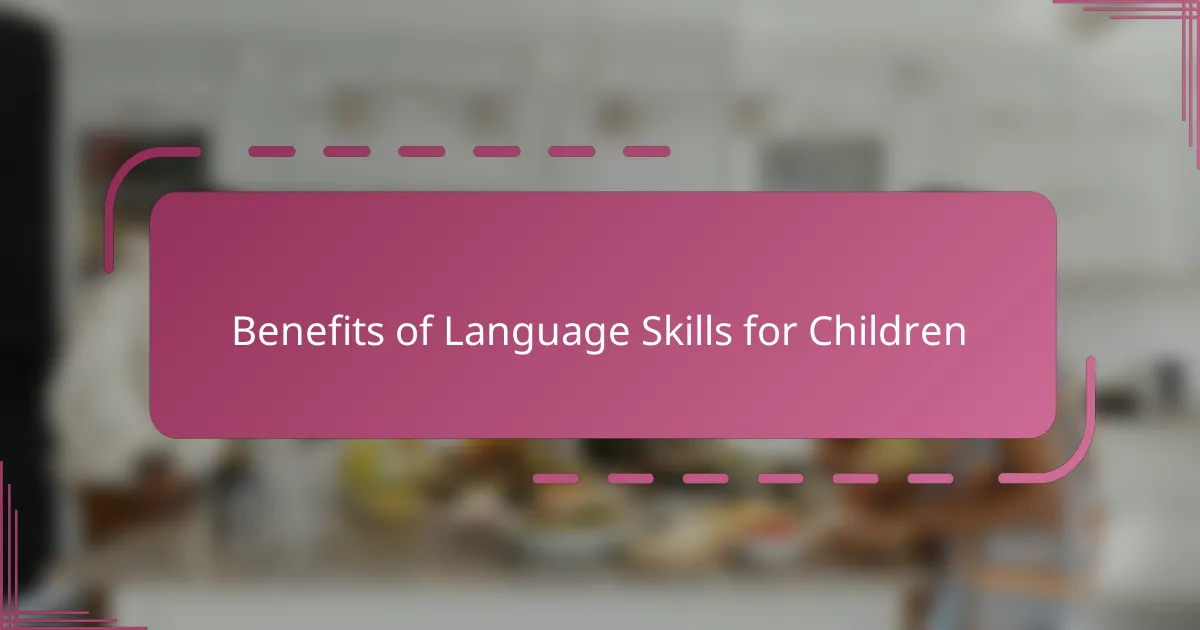
Benefits of Language Skills for Children
Language skills open up so many doors for children, not just in school but in understanding the world around them. I’ve seen firsthand how my own kids become more curious and confident when they can communicate in another language. Isn’t it amazing how unlocking a new language can boost a child’s self-esteem and problem-solving abilities?
What really strikes me is how language learning nurtures empathy. When children learn to switch between languages, they start seeing things from different perspectives. I remember my child asking thoughtful questions about cultures we’d only touched on briefly, and it felt like language was their bridge to a bigger, more connected world.
Plus, there’s that cognitive edge—studies show bilingual kids often have better memory and multitasking skills. From my experience juggling family routines, I appreciate that giving kids language skills early on is like giving them a mental workout that pays off lifelong. Doesn’t that make language learning feel even more worthwhile?
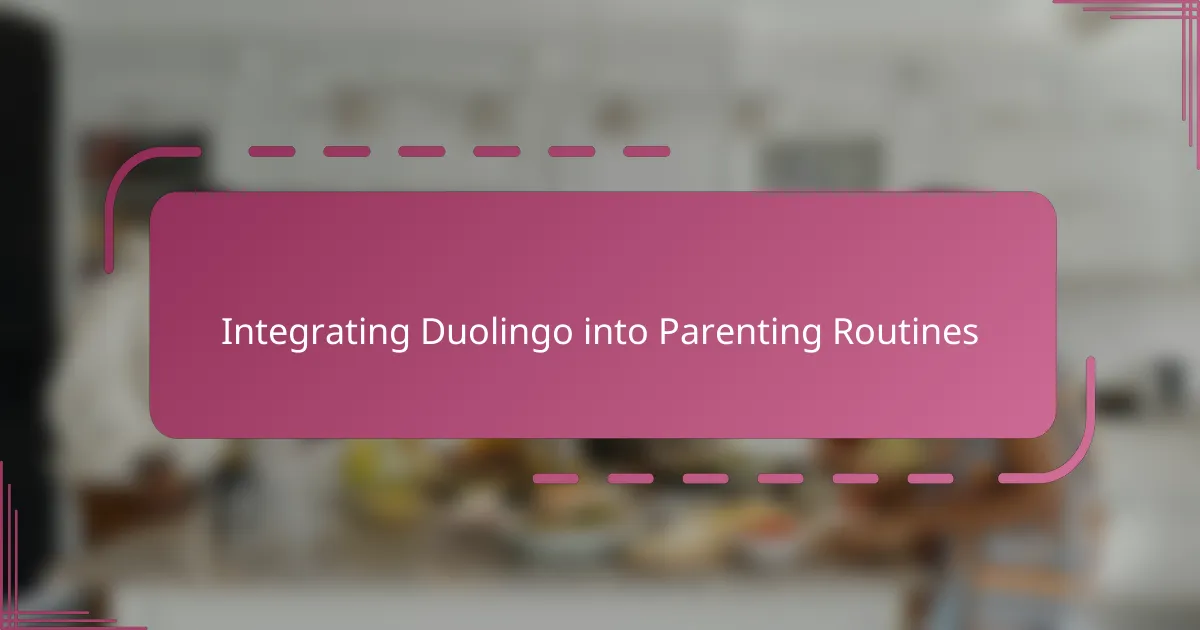
Integrating Duolingo into Parenting Routines
Incorporating Duolingo into our daily parenting routine felt natural once I treated it like a small but consistent habit—just five minutes after breakfast or right before bedtime. I noticed that framing the app as a shared activity made a world of difference; my kids loved competing with me on who could keep their streak going the longest. Have you tried turning tech into a family game? It creates these sweet moments of connection amidst the chaos.
Sometimes, I’d hear my son excitedly repeating new words he learned on Duolingo, which sparked spontaneous conversations at the dinner table. It reminded me how even a little exposure through an app can extend beyond the screen and breathe life into everyday interactions. It made me realize that the key isn’t just using Duolingo, but weaving it seamlessly into moments we’re already spending together.
Of course, I’m mindful not to let it replace real conversations entirely. That’s why I pair Duolingo lessons with playtime or storytelling in the new language, making learning something lively and human rather than just a solo clicking exercise. Don’t you find that blending tech with hands-on parenting creates a richer experience? For me, that balance has been the sweet spot.
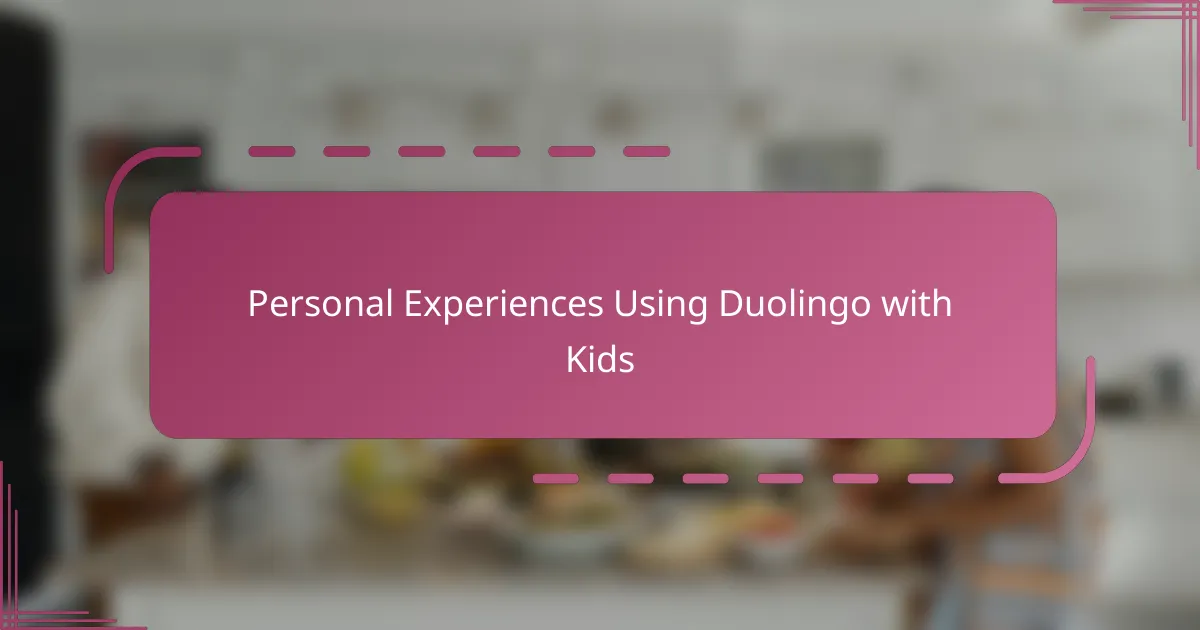
Personal Experiences Using Duolingo with Kids
Introducing Duolingo to my kids was a bit of an experiment at first. I remember one afternoon when my daughter proudly exclaimed a new phrase she learned, and her eyes lit up with excitement—it was a small victory, but it felt huge in that moment. Have you ever noticed how a child’s enthusiasm for language can turn a dreary afternoon into something unexpectedly joyful?
What surprised me most was how my kids took ownership of their learning, eager to unlock the next level and earn their badges. It wasn’t just me pushing them; they genuinely wanted to see their progress grow. This kind of motivation, I’ve found, is gold in any educational tool.
However, there were times when I caught them getting frustrated with repeating similar exercises or struggling to pronounce tricky words. It made me realize that while Duolingo is a helpful companion, it can’t replace the patient, encouraging voice of a parent guiding them through the bumps. Doesn’t every language journey need that human touch alongside technology?
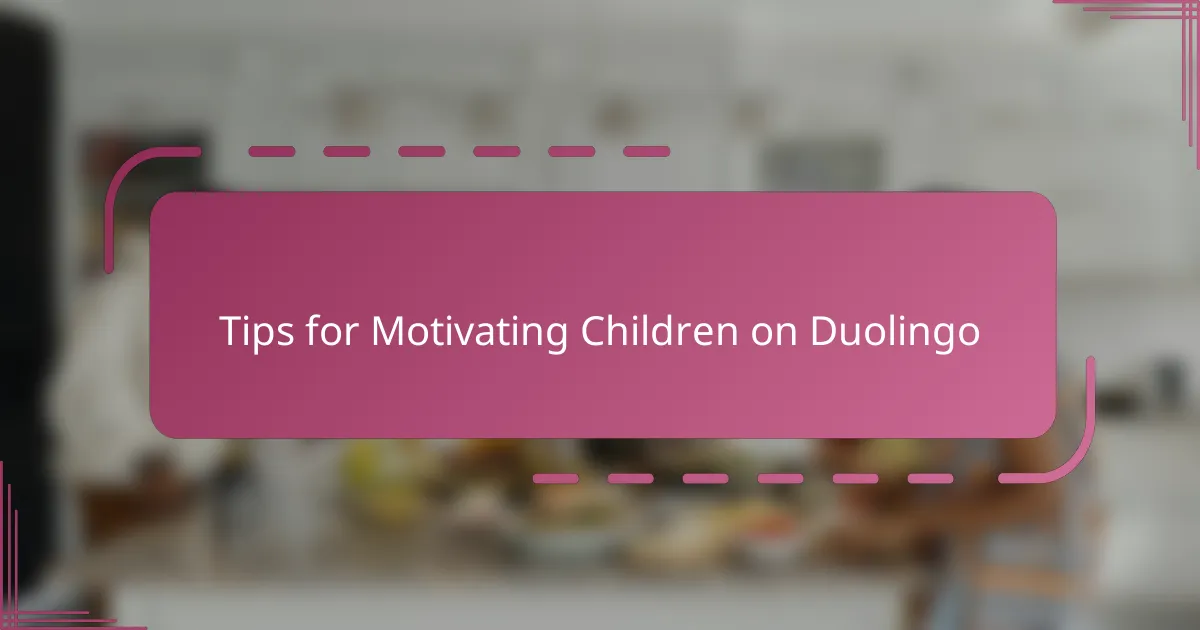
Tips for Motivating Children on Duolingo
One trick I found helpful was turning Duolingo into a daily challenge with small rewards. For instance, after my kids completed a streak of five days, we’d celebrate with their favorite snack or extra playtime. It made the app feel less like a chore and more like an achievement worth aiming for. Have you tried rewarding consistency rather than just perfect scores? It shifts the focus to effort, which really helped my kids stick with it.
I also noticed that mixing up the lessons with real-world practice kept motivation high. After a lesson, I’d ask my child to teach me a few new words or phrases, turning the learning into a fun game. This little role reversal made them feel proud and confident—like they were the language expert in the house. Could there be a better way to boost enthusiasm than letting children share their new skills?
Sometimes, keeping motivation alive means stepping back and not pushing too hard. When my child felt burned out, taking a short break or easing up on daily goals prevented frustration from setting in. It reminded me that patience is key; learning a language is a marathon, not a sprint. Would you agree that balancing encouragement with understanding makes all the difference?
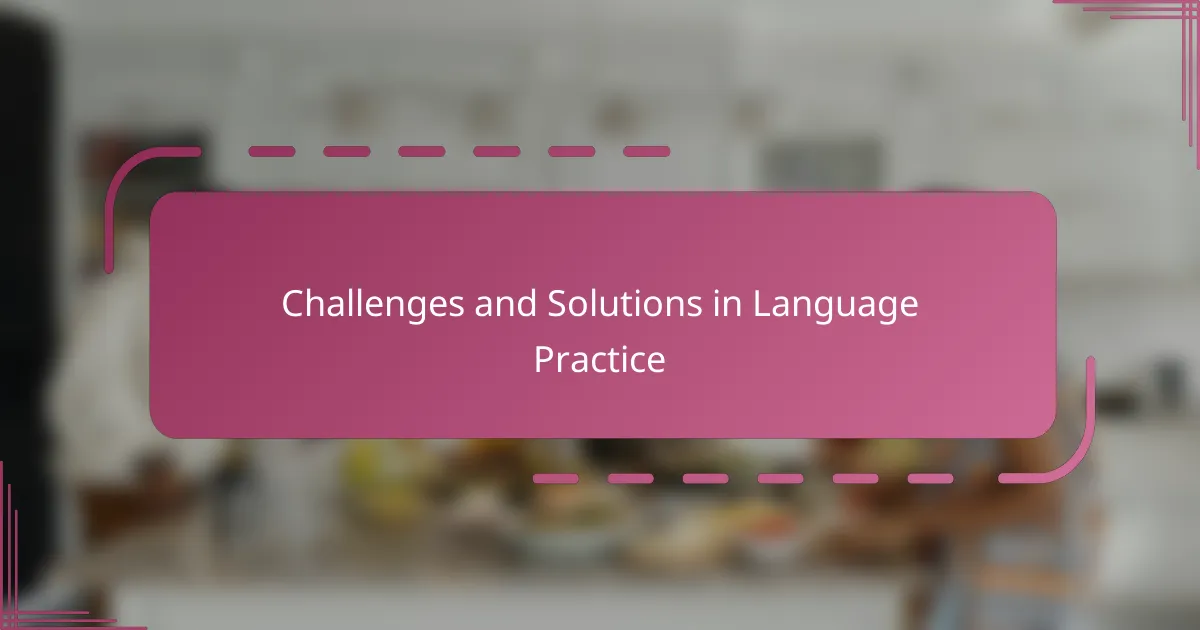
Challenges and Solutions in Language Practice
When practicing a new language with Duolingo, I’ve often hit the wall of repetitive tasks feeling a bit stale. It’s like doing the same puzzle over and over—I started wondering if my kids were actually absorbing the language or just clicking through. Have you noticed how repetition can sometimes kill the excitement? What helped me was mixing up the routine with short, real conversations, even if imperfect, to give practice some life beyond the screen.
Another challenge I encountered was keeping the kids from guessing answers just to maintain their streaks. That pressure to “not break the chain” can turn learning into a race rather than a meaningful process. I found that shifting our focus from streaks to understanding—by praising their effort in using new words aloud—made a huge difference in keeping them genuinely engaged. Doesn’t it feel better when your child’s confidence grows because they actually use the language, rather than just tapping buttons?
Pronunciation was a tricky beast, too. Duolingo’s voice recognition isn’t perfect, and my kids sometimes got frustrated when the app didn’t “accept” their attempts. I reminded myself that patience and gentle corrections during our practice moments mattered more than the app’s feedback. Sometimes we’d laugh over silly mispronunciations, turning frustration into fun. Isn’t it amazing how a little humor can turn challenges into cherished memories?

Enhancing Language Learning Beyond Duolingo
Beyond Duolingo, I found that real-life language exposure truly brings learning to life. Listening to songs, watching cartoons, or even cooking together while using the new language adds layers of meaning that the app alone can’t provide. Have you tried turning everyday moments into mini language adventures? From my experience, these natural interactions help kids connect words to feelings and actions, deepening their understanding.
I also encourage mixing in conversations with native speakers, even if it’s just a few simple sentences. When my kids chatted with family friends or neighbors, their excitement soared, and they picked up nuances that no app exercise could teach. Doesn’t seeing language in a living context make all that memorization feel meaningful? I’ve noticed those exchanges build confidence that translates back into our lessons at home.
Finally, I can’t overstate the value of storytelling and play in language growth. Role-playing favorite characters or inventing simple stories in the new language invites creativity and makes mistakes part of the fun, not something to fear. Have you witnessed how kids blossom when learning feels like a game rather than a test? This approach has been a game-changer for our family, adding warmth and spontaneity beyond screen time.

